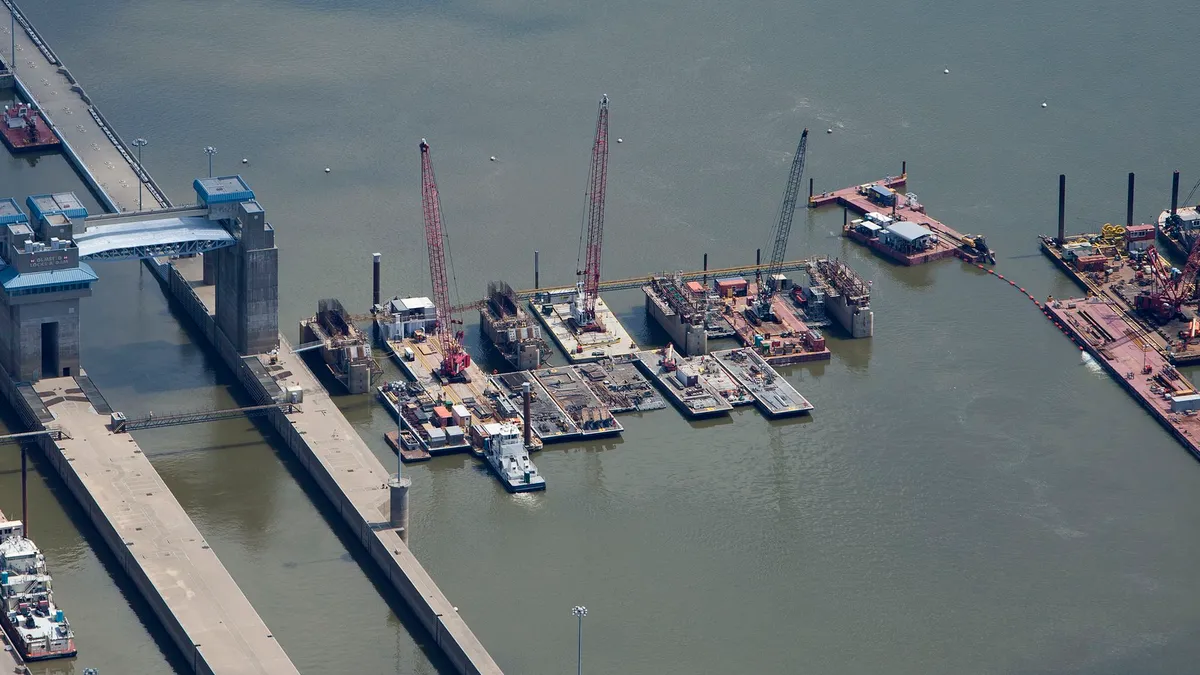Dive Brief:
- Fourteen global food supply choke points were identified as vulnerable by a recent Chatham House think tank report, The Guardian reported Tuesday.
- The ports on the U.S. Gulf of Mexico, its inland waterways and rail network were identified as one of these bottlenecks capable of threatening food supply. The Suez Canal, Panama Canal, five straits and Brazil's ports and roads were also cited as vulnerable.
- Bottlenecks, caused by high traffic upon limited routes, can threaten food supply in the case of natural disasters or even political crises, like the Arab Spring, according to the report. While the report focuses on food supply, these choke points also highlight global infrastructure needs affecting other industries' growth.
Dive Insight:
Disruption at choke points along the global food transport chain can have a tremendous international impact.
When wheat from the Midwest is delayed by a port closing in or around the Gulf of Mexico, consumer impact can be felt all the way in Brazil or in areas around the Black Sea. It's akin to the butterfly effect, where action in one remote area is eventually felt in another. Similar effects can be felt in the U.S., when traffic at the Strait of Gibraltar is affected due to strikes at Spain's Port of Algeciras, for example.
Resolving the issue of choke points is extremely complex and requires careful infrastructure consideration.
In the recent case of the overcrowded Northern Indiana Borman Expressway, the opportunity to avoid Chicago traffic by utilizing the new Lake Michigan shipping route from Muskegon, MI to Milwaukee, WI may eliminate a common choke point altogether. This fix is available thanks to the proximity of the Great Lakes to the Midwest, but other regions across the world may not be so lucky in their landscapes.
Another method of preventing potential food import delays is to diversify supply routes, which can avert supply chain risk. The Guardian reports China, for example, invested in a railway crossing South America in order to reduce its reliance on the Panama Canal.
There is little supply chain managers can do to avert a crisis as far away as the Suez Canal, the Panama Canal, or the Strait of Gibraltar. However, managers can map their supply routes in collaboration with supply chain partners to see if any primary suppliers — in the U.S. or abroad — rely on these trade routes for product delivery, and create a resilience plan to mitigate risk when disaster strikes.













